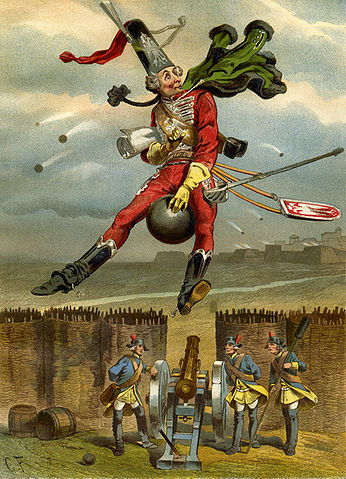
By P. F. Sommerfeldt –
That far-fetched frolic of the rogue librarian Raspe, Adventures of Baron Munchausen has entertained many generations of readers since 1785, including the genius Terry Gilliam who made his peerless movie version in 1988, thereby introducing its wiles to modern cinematography, although often faithful to Gustave Doré’s 19th century illustrations. Gilliam is known for vastly over-spent box office disappointments that eventually become cult raves of cognoscenti. Now there is a new Munchausen with an equally fun quodlibet of outré California tales, behind-the-scenes stories as honest as any caricature of history which is at the same time a revelation of truthful trivia found nowhere else. Author and restaurateur Jamis MacNiven was born to entertain with his California cabinet des curiosités, the famous and whimsical Bucks of Woodside where the imaginative and healthy fresh fare regales billionaires, venture capitalists and the adventurous under the most eclectic collection of memorabilia imaginable. The fictional character of Baron Munchausen with his ship that flies to the moon, meeting Vulcan and Venus under the earth, his journey to the Ottoman Sultan’s harem and other improbable combinations of truth and legerdemain, are loosely based on a real Freiherr von Munchausen, a baron who fought in the Russo-Turkish War of 1735-39 and who also loved to recount outrageous tales that made him a court celebrity among aristocrats. Likewise, the sometimes thin line between fact and fancy are cleverly blurred in Jamis MacNiven’s book compiled from actually flying over the entire California coastline in a dirigible; but his credibility is rock solid even given the hunch that both the real and imaginary Munchausens would easily have warmed to this new book that is very hard to put down.
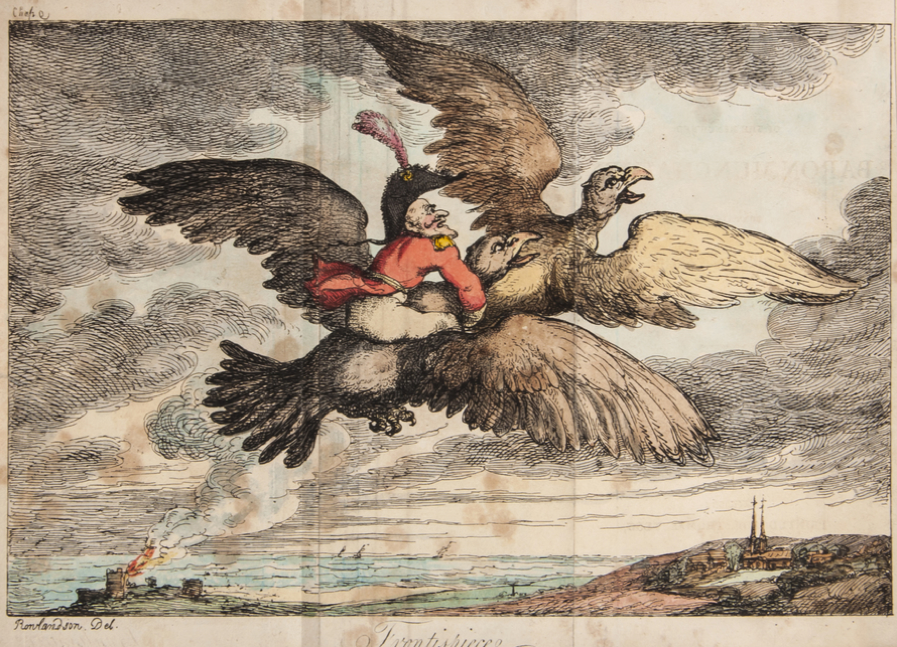
Anyone raised in a carnival family will naturally be a raconteur, and Jamis MacNiven does not disappoint. It’s hard to keep one’s jaw from dropping at his tales about growing up with real family flea circuses and riotous escapades. One of the first things he said to us with a smile and a wink was the adage he attributes to Strabo, “When the facts are short, make the pen long.” His California From 500 Feet (2015) is a tour de force (or farce) where wild facts, scandals and brouhahas mix freely with sympathetic history while ballooning up and down and around the coast of the still Wild West with its colorful characters. San Francisco’s self-styled Emperor Norton would have been proud.
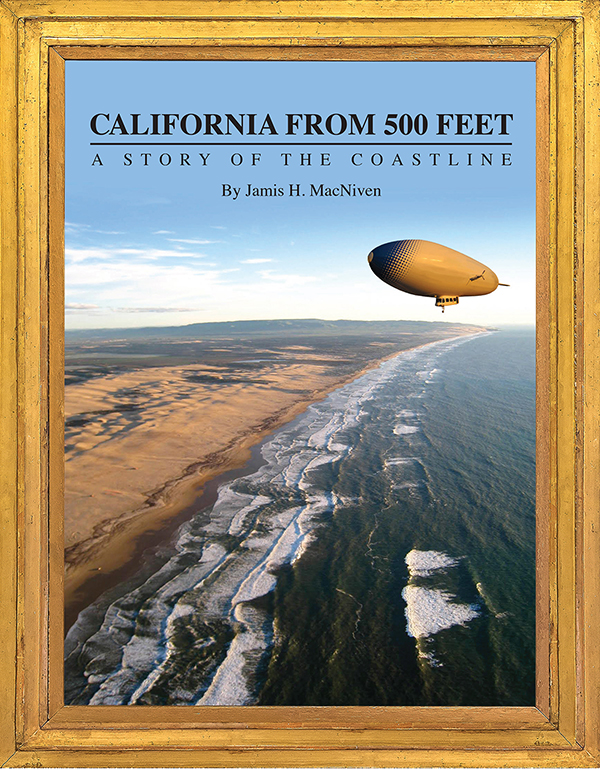
From the spicy border of Mexico to the milder border of Oregon, California from the air is never the same. Through Jamis MacNiven’s eyes, it’s not so much the moral height from a hot air balloon as the observant scrutiny that everything looks different from various perspectives. Hollywood, the Gold Rush, Venice Beach, Barbary Coast, Malibu, Mendocino each offer unique attractions, and mythical Queen Califia must have sent her siren mermaids afar to bring so many colorful characters within California’s magnetic pull, including larger-than-life dreamers who managed to sell their imagination to the masses. Even his version of Drake’s Hoax is a paean to wishful thinking and the droll ingenuity of the fraternal order E Clampus Vitis, whose motto is Credo quia absurdum, “I believe because it is absurd.” Rabelais must be a posthumous member of the Clampers.
Much of MacNiven’s style is tongue in cheek and if anyone can be lampooned, count on it. Some suffer more than others under the spotlight – some even endearingly so and may have even wanted the notoriety – but the reader is nowhere required to forget or forgive in MacNiven’s “long” pen, only to indulge his free-spirited gift of language and keen eye for spoof.
Here you read about events few remember, however ephemeral, like the gargantuan movie sets for Cecil B. Demille’s 1956 Ten Commandments on Nipomo Beach, or San Francisco’s Panama Pacific International Exposition of 1915, where 18 million people came or were exhibited on the grand avenues – attracting many famous performing or important personalities like Buffalo Bill Cody, Charlie Chaplin, Helen Keller, Harry Houdini, composer John Philip Sousa, composer Camille Saint-Saëns, artist Albert Bierstadt, and even Franklin Roosevelt as Secretary of the Navy – but only one of the enormous monuments remains (Palace of Fine Arts). In fact ephemerality is celebrated in this book: Sic transit gloria mundi could be its subtitle.
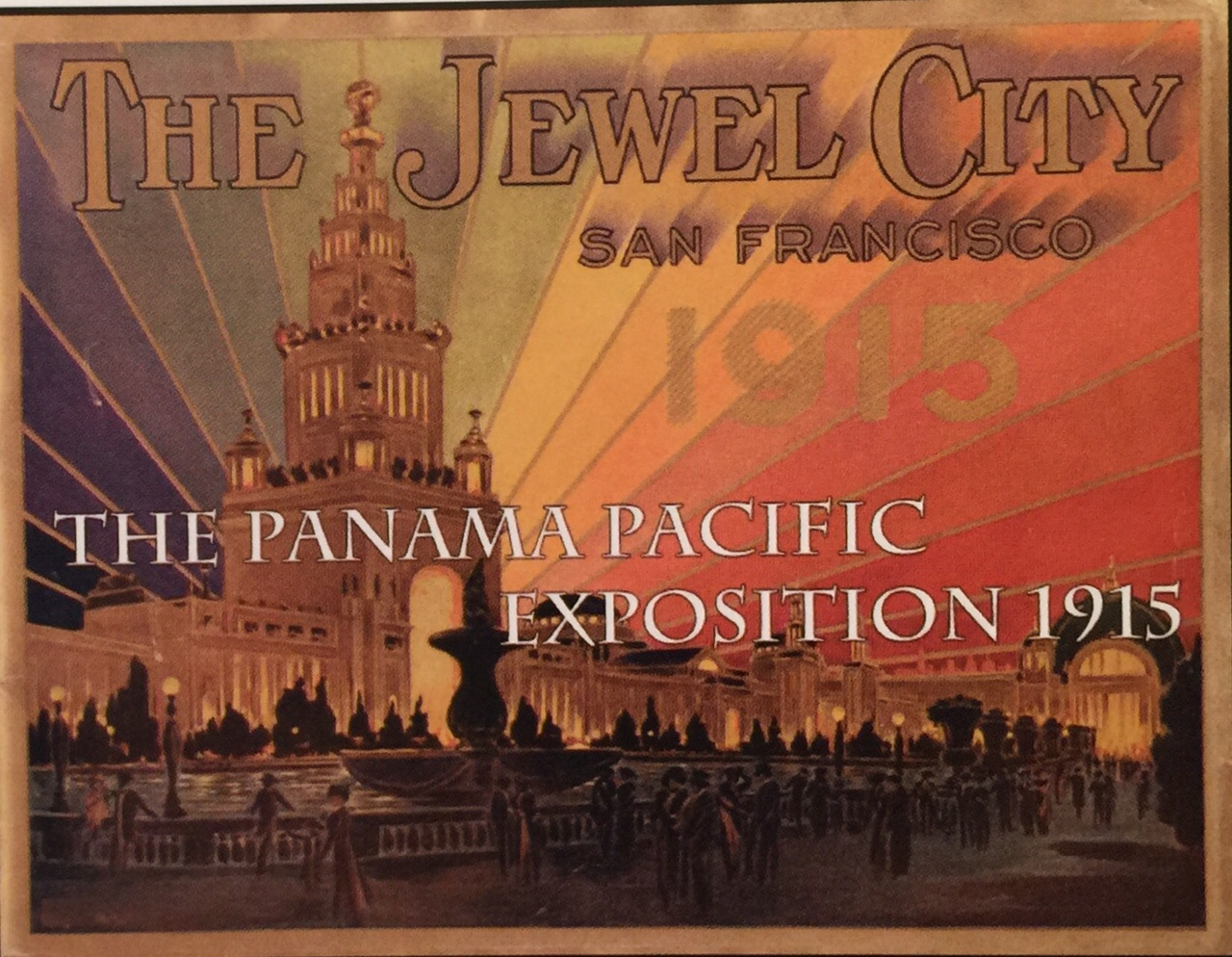
California history may seem only a few centuries deep but there are many details any Californian (or Iowan for that matter) can find fresh here. A reader can better savor with MacNiven’s flair for literary lives like Richard Henry Dana, Jack London and Bayard Taylor. He revives Alta California, Californios and the Bear Flag Republic, the humbug and intrigues of Stephen C. Fremont and Thomas Larkin, or picaresque 16th century fictional explorers like Garcia de Montalvo’s Esplandián searching for Queen Califia. MacNiven whimsically annotates the inventions of Rufus Porter, the payback of John (Johannes) Sutter, and the eccentricities of Howard Hughes along with a brief but fascinating history of ballooning itself and the paisleyed hippies of the 60’s. He contrasts the grandiose structures of the Sutros and nature’s Big Sur’s Esalen as well as humors the exponential ascents of real estate. Soar with MacNiven by balloon over Pacific Palisades, the rugged Farallon Islands, elephant seal studded Año Nuevo Beach and the redwoods of Jedediah Smith River and you better understand the coastline. Did you know the padres of Carmel Mission bless cars in the annual Pebble Beach Concours d’Elegance?
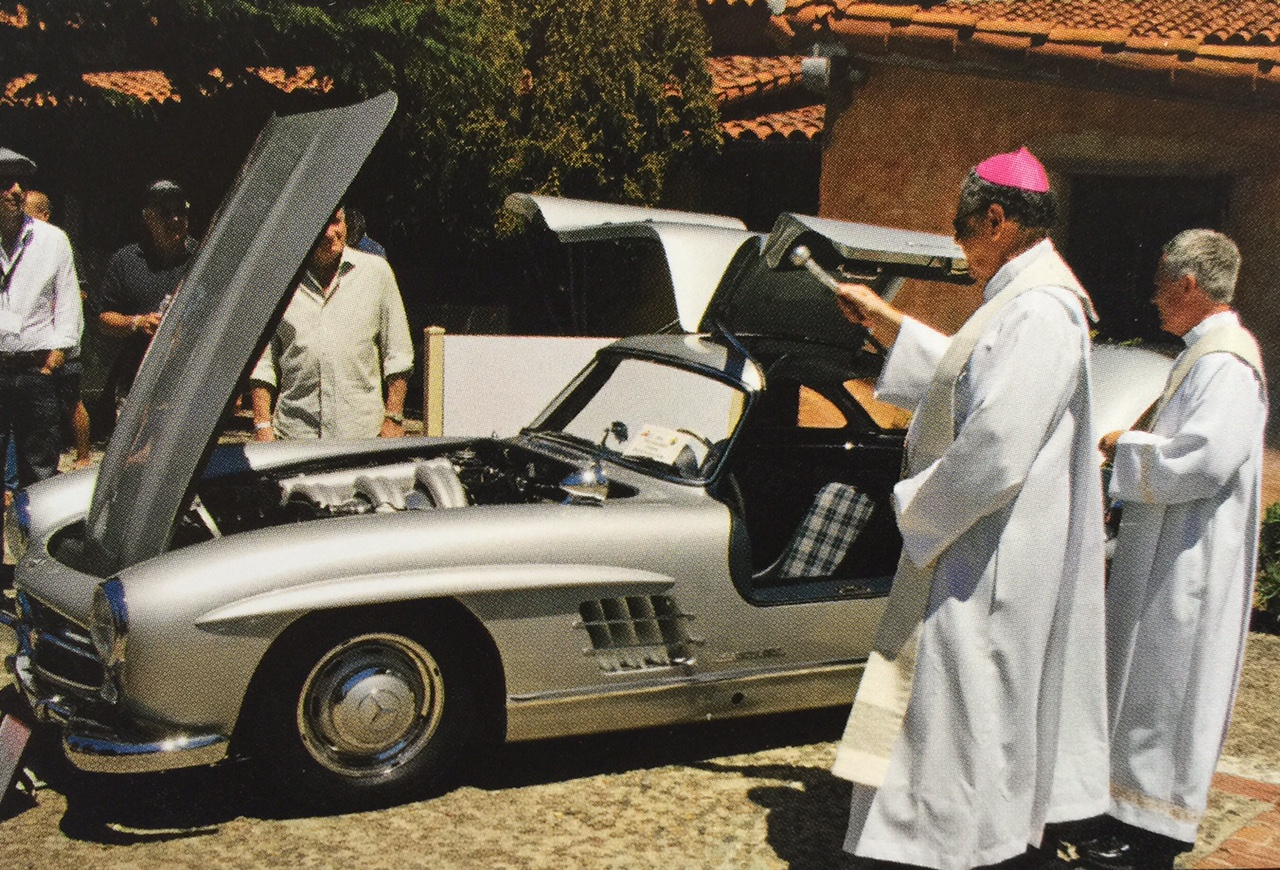
Even if Malibu really once was named maliwo, meaning “where the surf sounds loudly” to the indigenous sparse population as MacNiven shares, the glam palaces on its slopes are precipitously perched, many founded on the fickle chutzpah of show business. Leo Carillo (a relative of MacNiven’s by marriage) mixes easily here with Walt Disney, Art Linkletter, William Randolph Hearst and Marion Davies, along with horse thieves, Father Serra, tragic figures like Concepcion Arguello, the San Francisco origins of “shanghaiing” and many other events and personalities. My own grandmother was actually Marion Davies’ nurse, living on the San Simeon estate, and since my family has been Californian for five generations, adventurers arriving with the Gold Rush, I love the way MacNiven relishes his story-telling prowess with gossipy ease rather than a mere recitation of ostentatiousness and preachy tedium as too many professional historians achieve when writing about folks they envy.
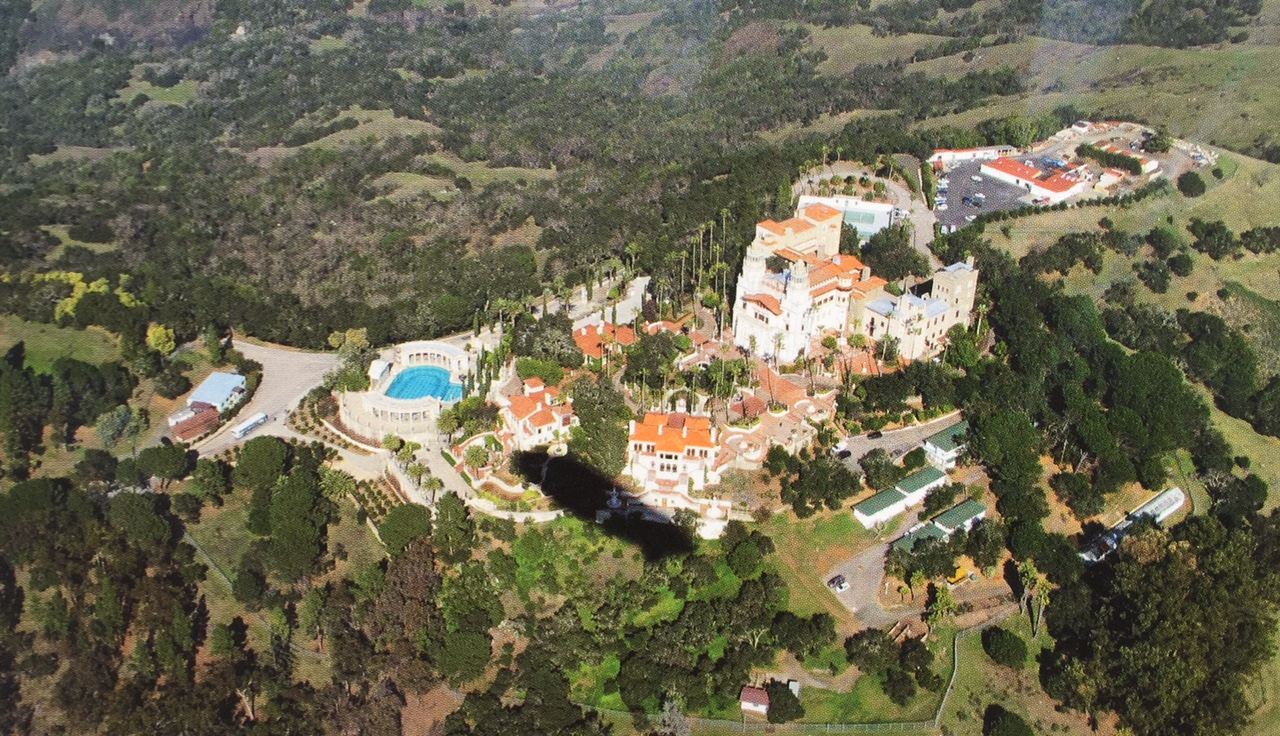
MacNiven never appears envious, rather mostly sympathetic. These are real flesh and blood people on his pages, not just statistics, and their antics and angst flesh them out. His vintage photos are also priceless, sourced from amazing archives. I remember our whispered family stories about my great-aunt Alma Reed, the writer who was Mexican revolutionary Felipe Carillo’s lover and who knew Pancho Villa in Mexico. Every time I drive on Alma Street in Palo Alto I chuckle that it was named for her by her father (and my great-grandfather), a Peninsula developer, as was Alma Bridge in Los Gatos. Mine was a family of ranchers in Napa Valley, where my mother was born in a big turreted white house still standing in Napa. I only wish Jamis MacNiven could tell other California tales like Alma Reed’s escapades with his wicked sense of humor. I suspect if in MacNiven’s lively wit, any such tale would be hard to stop reading.
(The reviewer notes that Jamis MacNiven’s California From 500 Feet is not yet available on Amazon – in the spirit of iconoclasm – but is only available at or from Bucks of Woodside, so that could be a double treat.)